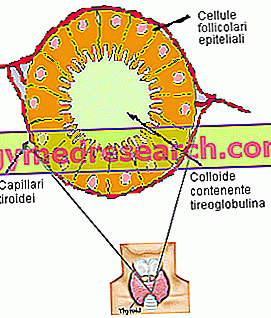Introduction
"How to observe the world under water": this is how many patients suffering from cataracts define their ability to perceive an image, while fixing it carefully. Cataract is an eye disease in which the crystalline lens, the biconvex natural lens that refracts light to focus on an object, undergoes a progressive opacification.
Curiosity: why can't we focus on an image in water?
Before answering this question we must take a step back. The eye, an indispensable organ for vision, should be considered a sort of diopter with several surfaces: the cornea and the crystalline lens, which together give rise to a system of converging lenses. The dioptric power of the cornea is very high (43 diopters) because the ratio between its refractive index (equal to 1.38) and that of air (equal to 1) is considerable. On the other hand, the indices of refraction of the cornea (1.38) and of water (equal to 1.33) are quite similar, as a result the objects under water appear blurry and fogged because the fire is not on the retina (but far beyond ).
- From here we understand the reason why patients suffering from cataracts have the sensation of observing the world "as if they were underwater" (although - let us specify it once again - in the presence of cataracts the problem concerns the opacification of the lens).
How it manifests itself

Despite the common cataract - therefore the senile variant - tends to manifest itself in both eyes (bilaterality of the disease), generally one eye is struck before the other.
Generally, the cataract does not induce any kind of change in the appearance of the eye: any inflammation, redness or tearing certainly depend on other eye infections, and are not related in any way to cataracts.
Only when the cataract becomes "hypermatura", that is the eye becomes completely white, can the patient experience inflammation, headache and pain caused mainly by the disease.
Types of cataracts
Not all types of cataracts manifest themselves in the same way. Depending on where the disease originates, several variants can be distinguished:
- NUCLEAR CATARACT (affects the center of the lens): at first, this type of cataract causes a certain myopia. In some cases, nuclear cataract paradoxically favors an improvement in vision. However, progressing, the disease alters the lens to the point where the patient begins to see double or multiple images. In addition to these strange symptoms, the unfortunate bearer accuses a vision clouded by yellowish spots. When untreated, nuclear cataract induces a progressive yellowing or browning of the lens; consequently, the subject is no longer able to distinguish colors.
- CORTICAL CATARACT (involves the edges of the crystalline lens): in this form of cataract the edge of the crystalline lens appears whitish or has anomalous chromatic nuances. Progressing slowly, the shades extend towards the center, until interfering with the light that passes through the center of the lens. Patients with this disorder often experience problems with their eyesight.
- CATARATTA SUB REAR CAPSULAR: in this form of cataract there is first a small dull area near the back of the lens; precisely, this "shadow" is formed precisely at the point where the light should pass to reach the retina. Patients suffering from posterior sub capsular cataracts, almost always young, often experience more or less frequent phenomena of glare and / or deterioration of near vision. Furthermore, affected individuals complain of serious reading difficulties and night vision is difficult.
- CONGENITAL CATARACT: it is caused by metabolic disorders of the mother or by the administration of drugs taken during pregnancy and transmitted to the fetus.

General symptoms
To learn more: Cataract Symptoms
The cataract can be more or less serious: while in some patients the disease causes a slight difficulty in focusing on an image, in others it is responsible for the most total visual incapacity.
Generally, the clouding of the vision induced by the cataract involves only a small portion of the lens: for this reason, in the early stages of the disease, the patient experiences a slight alteration of vision. However, with the progression of the pathology, the cataract grows and distorts more and more the light that passes through the lens: in this way, the view becomes more and more blurred and the focus is compromised.
While not always manifesting with the same severity, cataracts can cause a series of symptoms:
- Blurred vision
- Difficulty in identifying colors
- Difficulty / impossibility of reading
- Image fading / vision yellowing
- Need to change glasses lenses more often due to reduced vision
- Observation of dark halos around objects
- Worsening of vision in the presence of weak / very strong light
- Splitting of sight (rare symptom)
- Spot or point view
Complications
Unfortunately, in most cases, the course of the cataract is not predictable. However, the evolution of the common cataract is very slow; consequently, when one intervenes from the earliest symptoms, surgery may be the only lifeline for sight.
If left to itself, the cataract can become hypermatura (margagnana cataract): the crystalline cortex liquefies and becomes milky, obscuring the vision considerably ("white eye"). This phenomenon not only increases the risk of failure for a possible surgical intervention, but is often responsible for the onset of other diseases affecting the eye, such as glaucoma.
In some cases, the cataract can cause myopia *, a phenomenon that, in the elderly, nullifies presbyopia *: in other words, the patient "readily" manages to read without glasses, which is misinterpreted as an improvement of the disorder.
* Glossary
- Myopia: a condition in which the vision appears clear at a short distance (it can be seen well up close and bad from afar)
- Presbyopia: physiological condition that results in the progressive loss of the "accommodative" capacity of the eye to focus
When to consult a doctor
Patients over 60 years of age - clearly more at risk of cataracts - should undergo periodic routine eye checks to eventually surprise possible eye abnormalities.
In any case, the opinion of the specialist is essential when you notice changes (even slight) of vision or sudden changes in vision (eg, doubling of sight or difficulty in focusing).
Early diagnosis and prompt surgical intervention are the two main rules for saving eyesight from cataracts.



